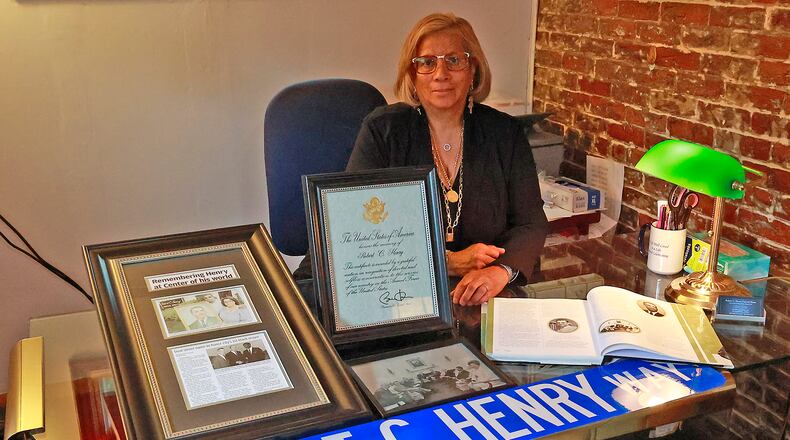To ensure that equally special stories others have won’t be lost to time, Henry has been sending emails and posting Facebook messages urging her African-American friends to do what she will be doing Wednesday: take her bracelet and the story goes with it to the Gaier Room of the Clark County Public Library so both can become a part of recorded history.
From 2:30 to 6:30 p.m. that day volunteers of the Ohio History Corps will be photographing and scanning pictures, objects and documents — and recording stories that go with them — so the tales can be preserved and shared by the Clark County Historical Society.
The budding historians of the AmeriCorps-affiliated program are devoting their special project this year to collecting stories from the African-American community, that so often were ignored in the past.
Reflecting the spirit of the event, Alex Corpuz, one of Wednesday’s volunteers, said: “I think that history is something that is deeply human, and in planning this scanning day, I want to share this humanity with other people.”
Corpuz’ Ohio History Corps posting is with Ohio Humanities, of which Turner Foundation and Springfield historian Kevin Rose is a former board chair.
And it is to him the Ohio History Corps turned when it was looking for the right place to do its project.
Rose didn’t hesitate to suggest Springfield, which he says had “one of the largest, if not the largest, per capita population of Blacks” in the industrialized North during the late 19th and early 20th centuries.
In Springfield, Black history “is not a side story,” he said. “It is history.”
Indeed, an Ohio historical marker in front of the Robert C. Henry Funeral Home identifies him as the first Black mayor of an Ohio city.
With Springfield selected, Rose quickly identified local partners: the Historical Society to store and exhibit the materials; the library to host the event; and the historic southside Hartman Rock Garden to lend its support.
Rose stressed the importance of documenting local history.
While stories are the ultimate product of historians – and treasured by people – he said “it’s often records that lead (historians) to writes stories.”
The importance of family photos in that cause was driven home to him last year when Hattie Moseley’s family was able to find a smiling portrait of her that wasn’t available in any official collection.
Because the artist and muralist Gaia had the picture to work from, “Now we have a mural on the side of her building (showing her) smiling in this really joyful way.”
And while Rose said it’s wonderful to be able to tell the personal stories connected with prominent public figures, as important are pictures and accounts of “the everyday Black experience: picnics in Snyder Parks, festivals and downtown parades, photos of Oats’ Barber Shop.”
Lisa Henry said that, in her father’s case, the personal, political and business sides were “hard to separate” and told bookend stories about him that seem to fulfill the “deeply human” essence of history envisioned by Ohio History Corps’ Corpuz.
The first involves a Robert C. Henry Sr. who was the last of 12 children and while attending the Cleveland School of Mortuary Sciences “didn’t know whether to save the can of beans (he had) for tomorrow or eat it today,” his daughter said.
The second involves the Robert C. Henry who, as owner of his own funeral home, was trying to figure out how to tell his wife, Betty, that she’d never see him wear the suit she had bought for him because it had been buried with a man dear to him who had needed it for his showing and funeral.
The story seems a perfect match for a document his daughter has and might bring to Wednesday’s event. It’s a business card reading: The Robert C. Henry Funeral Home: A Tradition of Dignity.
About the Author
